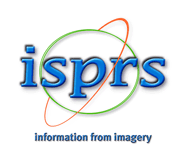Assessment of Land Use Changes in Ahvaz and Their Impact on the Morphological Changes of the Karun River Using Landsat Time-Series Data
Keywords: Land use change, river morphology, remote sensing, Landsat data, urban development, CA-Markov model, Ahvaz, Karun River
Abstract. Urban growth and development, especially in metropolitan areas, significantly impact the environment and natural resources. This study examines land use changes in Ahvaz and their effects on the morphological changes of the Karun River using a 20-year time series of Landsat satellite data (2000–2020). For this purpose, satellite images from the TM, ETM+, and OLI sensors were processed, and land use maps were extracted using the Maximum Likelihood Classification (MLC) algorithm. Additionally, riverbed changes were analyzed through hydro morphological indices and spatial analyses in a GIS environment.
The results indicate that over this period, urban areas expanded by 45%, while agricultural lands decreased by 27%. Furthermore, the Karun River’s width has narrowed by up to 15% in certain sections, with significant course shifts observed in central and southern Ahvaz. Change modeling using the CA-Markov model suggests that if the current trend continues, the river’s width may shrink by up to 20%, and urban areas could expand by 60% by 2030.
This study highlights the importance of using remote sensing and Geographic Information Systems (GIS) for effective water resource management and urban planning. It recommends implementing appropriate management strategies to mitigate the negative effects of land use changes.





